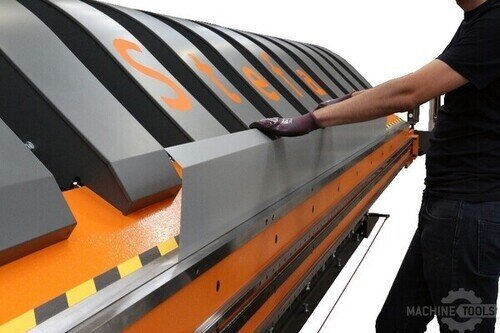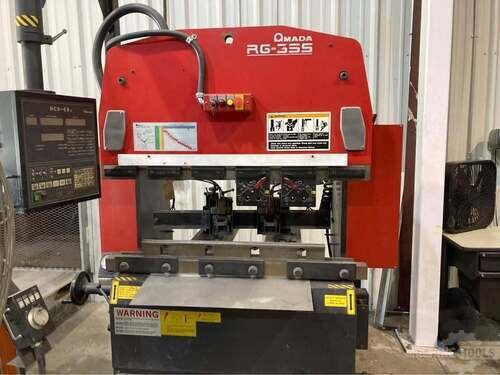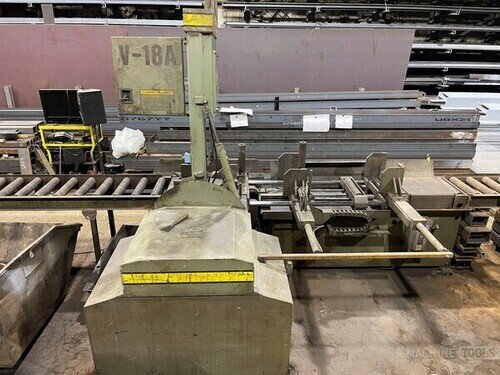I am Adam Quoss, VP of Sales at Mac-Tech, and I have spent my career helping metal roofing and architectural sheet metal shops streamline the way they cut, fold, and form. The right controls on press brakes, long folders, roll formers, and downspout lines are the difference between chasing rework and shipping repeatable, high-quality profiles on time. That is why I advise Indiana shops to look hard at year-end Section 179 planning for CNC control retrofits. It is a proven way to improve throughput while aligning a necessary upgrade with a strong tax outcome that helps fund the investment.
Indiana Section 179 at Year-End: playbook for writing off CNC control retrofits on press brakes, long folders, roll formers, and downspout lines
My guidance is simple. If you know you need better controls to hit roofing season lead times, leverage Section 179 before December 31. Indiana generally conforms to federal Section 179 rules, and qualifying control retrofits can be expensed when they are purchased and placed in service within the tax year. The placed in service detail matters. We make sure your retrofit is commissioned, producing parts, and documented before the deadline so your tax advisor has what they need. If you have not read it yet, see our piece How Indiana Shops Can Use Section 179 to Write Off CNC Control Retrofits Before Year-End for a practical checklist.
In most shops I visit, the financial returns are clear. Better controls cut setup time, raise first-pass yield, and reduce scrap on high-volume trims, panels, and accessories. Section 179 simply accelerates the payback by letting you expense the retrofit now rather than depreciate it over years. Many clients use financing so cash outlay is modest while the deduction lands this year. That combination is powerful when backlog is healthy but cash needs to be conserved for coil and labor.
Execution is the key. The wrong scope or a missed commissioning date can delay the deduction. My playbook starts with a fast onsite audit, a written scope of supply tied to your parts mix, a target installation window, and a placed in service packet that includes serials, photos, start-up reports, and operator sign-offs. We coordinate with your CPA on any timing or documentation questions so there are no surprises.
Where retrofits boost throughput in cut, fold, and form: CNC press brake controls and servo backgauges for trim, long-folder controllers for standing seam panels, encoder length control and flying shear on roll formers, and downspout line PLC upgrades
Press brake trim work thrives on consistent bend angles and rapid changeovers. A modern CNC control paired with a servo backgauge gives you auto-bend sequencing, material libraries for 24 to 26 gauge coil, and angle correction that compensates for batch variation. For shops running rake trim, J-channels, and fascia, this upgrade reduces test bends and moves inexperienced operators toward expert-level results faster. Your operators spend less time chasing springback and more time shipping parts that fit.
Long folders are the heart of standing seam and architectural panel programs. Upgrading to a contemporary controller with profile programming, radius routines, and automatic hemming transforms panel repeatability. You get tighter flange dimensions across long lengths, quick recall of custom details, and better cosmetics on color-coated coil. For contractors who expect panels to stack and install without fighting oil canning, this is where quality is won or lost. A smart folder control also reduces waste when switching between 12-inch and 16-inch module profiles with different hems and male-female orientations.
Roll formers and downspout lines benefit most from closed-loop control. An encoder-based length control with a responsive flying shear drives tight cut-to-length tolerances even as coil expands and contracts in Indiana’s seasonal temperature swings. On downspout lines, a PLC and HMI upgrade synchronizes bead, lock, and cut stations, ties in VFDs for speed matching, and adds recipe management so a change from 2 by 3 to 3 by 4 is push-button simple. The result is fewer short pieces, cleaner cuts, and cycle times that free up coil and labor hours for more profitable work.
Mac-Tech’s turnkey path to year-end compliance: onsite audit, scoped retrofit kits, installation and training, placed-in-service documentation, Indiana field service, and financing to secure the deduction on time
We start with an onsite audit focused on your bottlenecks and parts mix. I review your press brake tonnage, open height, backgauge travel, and existing control capabilities. I evaluate long folder clamping and beam speeds, roll former drive health, encoder placement, shear condition, and downspout PLC I/O capacity. From that, I recommend a retrofit package that fixes today’s pain points and supports your next year’s sales plan.
Once scope is approved, we ship a complete kit with controls, servo motors, drives, encoders, sensors, cabling, panels, and mounting hardware tailored to your machine make and model. Our technicians handle mechanical fit-up, electrical integration, safety interlocks, and I/O mapping. We train your operators on part programming, tool libraries, and best practices, then coach maintenance on backups, parameter management, and preventive checks. The goal is stable production in days, not weeks.
For Section 179, we plan installation dates that protect your cutoff. We document commissioning with time-stamped photos, serial number capture, run logs, and a placed in service report signed by your plant lead. Our Indiana field service team is available for any punch list or post-startup support. If you need financing, we line up options that allow you to use the deduction in the current year while preserving cash. Your CPA gets a clean package. Your shop gets a reliable upgrade that moves the needle on throughput and quality.
FAQ
How do I know if my retrofit qualifies for Section 179 in Indiana?
- Italicized answer: Consult your tax advisor, but in many cases CNC control, servo, encoder, and PLC retrofit packages that are purchased and placed in service by year-end qualify under federal rules, and Indiana generally conforms to those rules.*
What does placed in service mean for a retrofit?
- Italicized answer: The machine must be installed, commissioned, and producing parts in your facility before the deadline, with documentation to verify the date and operational status.*
How much downtime should I expect during installation?
- Italicized answer: Most press brake and long folder control retrofits take two to four days, and roll former or downspout PLC upgrades run three to five days, with scheduling to minimize production impact.*
Can you integrate with older machines and mixed brands?
- Italicized answer: Yes. We scope retrofit kits to your specific make and model, engineer interface plates and wiring harnesses, and map I/O so legacy hardware runs with modern controls.*
What ongoing maintenance is required after a controls upgrade?
- Italicized answer: Keep backups of parameters, verify encoder zero and shear timing weekly, check servo belt tension, and follow a monthly inspection of fans, filters, and connections.*
Will operator training slow us down during busy season?
- Italicized answer: Training is built into startup. We do hands-on sessions on your active jobs so operators learn while making sellable parts.*
- Can I finance and still take the deduction this year?
- Italicized answer: Often yes. If the equipment is financed, installed, and placed in service by year-end, you may still be eligible for Section 179, subject to your tax advisor’s guidance.*
I am happy to visit your plant, review your parts, and build a plan that locks in performance gains and helps you capture the year-end benefit. If you want straight answers on scope, timeline, and documentation, let’s talk. You can reach me at pat@mac-tech.com and I will put a plan on paper that your production and accounting teams can both endorse.
Get Weekly Mac-Tech News & Updates








